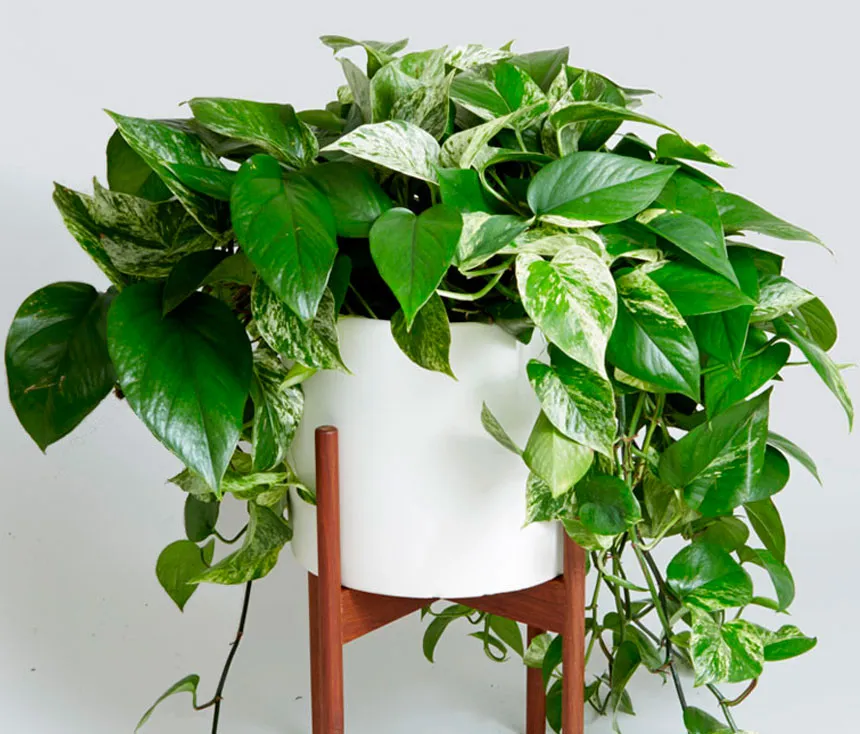How to Fix and Prevent Brown Spots on Pothos Leaves

Pothos plants, with their lush green leaves and easy-care nature, are a favorite among houseplant enthusiasts. However, even the most resilient plants can show signs of distress. One common issue is the appearance of brown spots on Pothos leaves. These spots can be alarming, but understanding their causes and implementing effective solutions can restore your plant’s health. In this comprehensive guide, we will delve into the reasons behind brown spots on Pothos leaves and provide actionable steps to fix and prevent them.
Understanding the Causes of Brown Spots on Pothos Leaves

1. Watering Issues
Overwatering and underwatering are the leading causes of brown spots on Pothos leaves. Overwatering can lead to root rot, a condition where the plant’s roots are unable to absorb nutrients and oxygen. This results in brown, mushy spots on the leaves. Conversely, underwatering causes the leaves to become dry and develop brown, crispy edges and spots.
2. Fungal and Bacterial Infections
Fungal infections, such as leaf spot disease, and bacterial infections can also cause brown spots. These pathogens thrive in humid conditions and can spread quickly if not addressed. Symptoms include dark brown to black spots with yellow halos.
3. Pest Infestations
Common pests like spider mites, mealybugs, and scale insects can cause brown spots by feeding on the plant’s sap. Their feeding activity damages the leaf tissue, leading to discoloration and spotting.
4. Nutrient Deficiencies
A lack of essential nutrients, particularly calcium and magnesium, can cause brown spots on Pothos leaves. These deficiencies can weaken the plant, making it more susceptible to diseases and pests.
5. Environmental Stress
Temperature fluctuations, low humidity, and improper lighting can stress the plant, leading to brown spots. Pothos plants thrive in stable conditions with indirect light and moderate humidity.
How to Fix Brown Spots on Pothos Leaves

1. Adjust Your Watering Routine
Proper watering is crucial to prevent and fix brown spots. Follow these guidelines:
- Check the soil moisture before watering. The top inch of soil should be dry.
- Water thoroughly until water drains from the bottom of the pot.
- Avoid letting the plant sit in water to prevent root rot.
2. Treat Infections Promptly
For fungal and bacterial infections:
- Isolate the affected plant to prevent the spread of pathogens.
- Remove and dispose of infected leaves.
- Use fungicides or bactericides as per the manufacturer’s instructions.
- Improve air circulation around the plant to reduce humidity.
3. Manage Pests Effectively
To control pests:
- Inspect the plant regularly for signs of pests.
- Remove pests manually with a cotton swab dipped in rubbing alcohol.
- Apply insecticidal soap or neem oil to eliminate infestations.
- Maintain cleanliness around the plant area.
4. Ensure Proper Nutrition
To correct nutrient deficiencies:
- Use a balanced, water-soluble fertilizer suitable for Pothos plants.
- Follow the recommended dosage on the fertilizer package.
- Consider using supplements for specific deficiencies, such as calcium and magnesium.
5. Optimize Environmental Conditions
Create a favorable environment for your Pothos:
- Maintain consistent temperatures between 60-85°F (15-29°C).
- Increase humidity by using a humidifier or placing the plant on a pebble tray with water.
- Provide bright, indirect light. Avoid direct sunlight, which can scorch the leaves.
Preventing Brown Spots on Pothos Leaves
1. Regular Monitoring and Maintenance
Regularly check your Pothos for early signs of distress. Promptly addressing issues can prevent severe damage.
2. Proper Watering Practices
Adopt a consistent watering schedule based on your plant’s needs. Ensure the soil drains well and avoid overwatering.
3. Pest Prevention
Keep your plant area clean and free from debris. Quarantine new plants before introducing them to your collection to prevent pest infestations.
4. Balanced Fertilization
Feed your Pothos with a balanced fertilizer during the growing season (spring and summer) to ensure it receives essential nutrients.
5. Environmental Control
Maintain stable environmental conditions. Use tools like humidifiers, grow lights, and fans to create an optimal environment for your Pothos.
Conclusion
Brown spots on Pothos leaves can be a distressing sight, but with proper care and attention, your plant can recover. By understanding the causes and implementing the solutions outlined in this guide, you can restore your Pothos to its lush, green glory. Remember, regular monitoring and maintenance are key to preventing future issues. Happy gardening!
You May Also Like: Easy Steps To Grow And Care Moonlight Pothos
